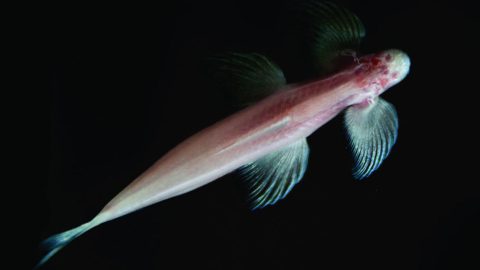Major Evolution Breakthrough: Blind Cavefish That Walks like a Four-Legged Creature Is Found

A team of scientists came to a stunning conclusion while studying a rare fish with no eyes that lives in the caves of northern Thailand.
The blind cavefish, Cryptotora thamicola, walks up rocks and climbs waterfalls like a tetrapod (a four-footed mammal or amphibian), utilizing its unusual pelvis that is fused to its vertebral column. The fish’s one inch-long pelvic girdle shares morphological features with terrestrial vertebrates.
The cavefish had been noticed before and even appeared in nature documentaries, despite being very hard to film due to the inaccessibility of the locations where it can be found. But it has not been studied until now and the just-released scientific research shines a whole new light on the uniqueness of this elusive creature.
While other “walking” fish exist, they tend to move using their fins, not via the pelvic adaptation demonstrated by the Cryptotora thamicola, making it move like a salamander. The discovery of this ability has not been seen in other living fish and adds to our understanding of how anatomy must have evolved to allow species to walk on land.
“From an evolutionary perspective, this is a huge finding,” said the study’s co-author Brooke E. Flaming. “This is one of the first fish that we have as a living species that acts in a way that we think they must have acted when they evolved from a fluid environment to a terrestrial environment.”
The evolution of tetrapods began around 395 million years ago during the Devonian Period, a time traditionally known as “The Age of Fish”. As tetrapods evolved to live on land, their bodies changed. The Thai cavefish is a fascinating reminder and confirmation of our knowledge of that time.
The research was carried out by Brooke E. Flammang, Daphne Soares, Julie Markiewicz and Apinun Suvarnaraksha from the New Jersey Institute of Technology.
You can read the full paper here
Image credit: Daphne Soares





